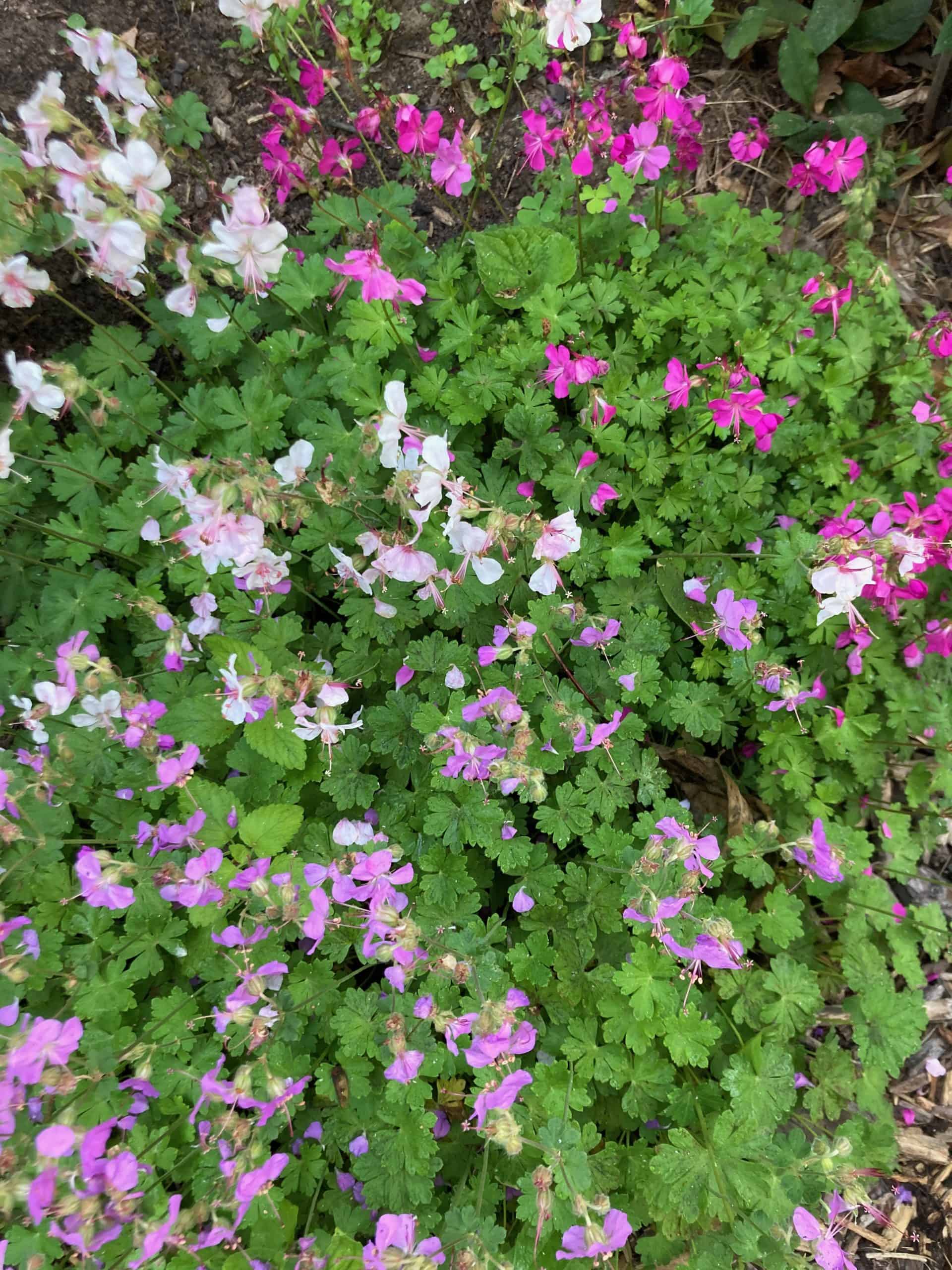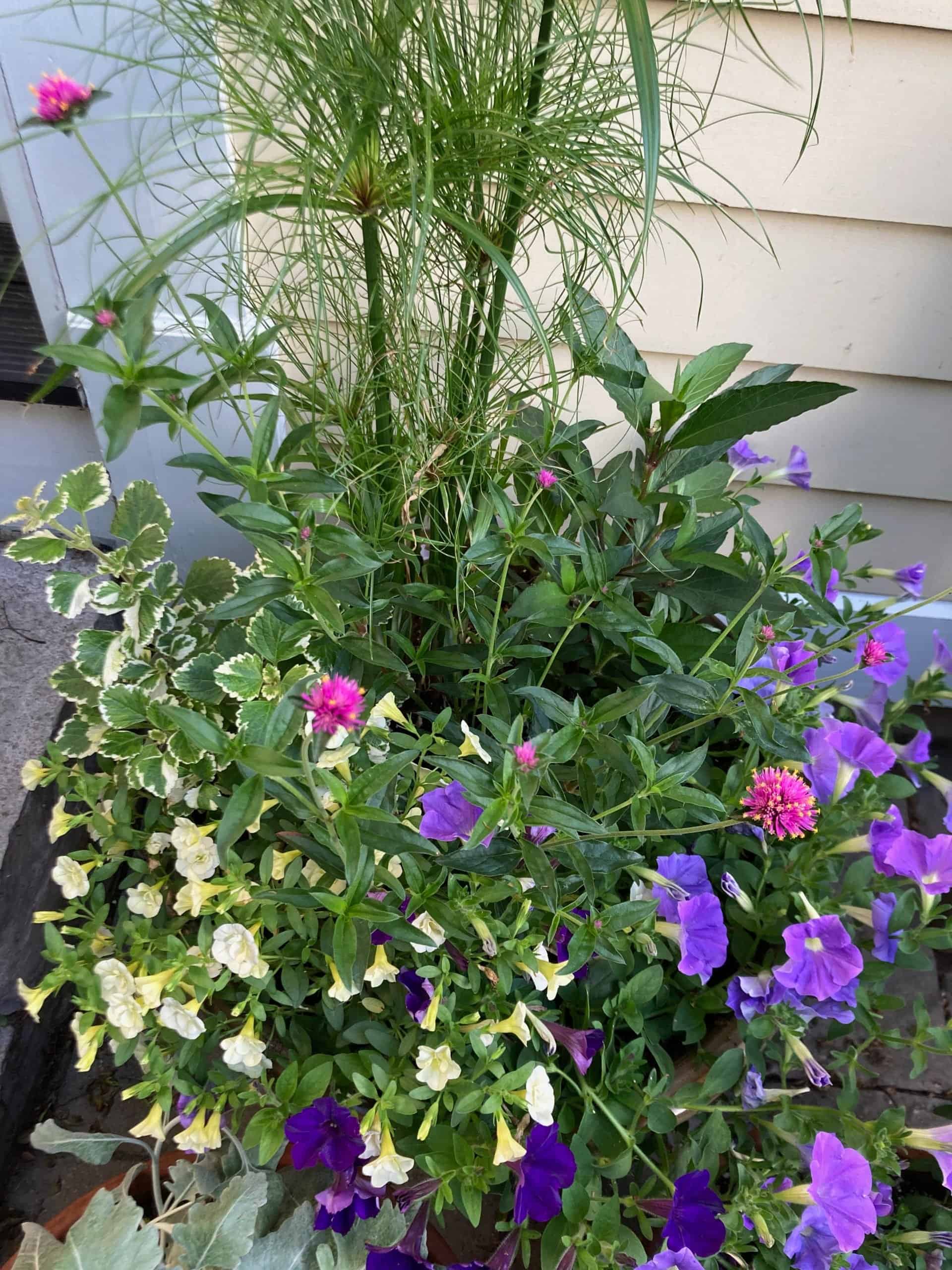When I find a genus of perennials that does well for me, I tend to latch onto it — perhaps obsessively so — experimenting with different species and cultivars in that genus. Cranesbills, now more commonly referred to by their genus name Geranium, have played an important, albeit supporting, role in my gardens for many years.
There are a huge number of perennial geranium species and cultivars — short or tall, compact or sprawling, for sun or shade, native or non-native, groundcover or specimen plant, adamant about good drainage or tolerant of heavy clay, etc. You get the picture: there’s a geranium for just about any garden or gardener. Most are hardy to Zone 4.

Probably the best-known geranium is Rozanne (Geranium ‘Gerwat’), named Perennial of the Year by the Perennial Plant Association in 2008. I grew it for a few years, but it was too much of a sprawler for me (perhaps not enough sun), although it was definitely a long bloomer.
I mainly use cultivars of G. sanguineum and C. x cantabrigiense as groundcovers around the base of sturdy perennials or shrubs, such as peonies, roses, tall border phlox and small spireas. Their white, pale pink, violet and rose flowers highlight, but never overshadow, whatever blooms are above them. They can be smothering, however, so I keep them away from irises and sedums.
A few have self-seeded with determination. Mounding G. sanguineum ‘Max Frei’, which has purple-pink blooms beginning in mid-May and lasting until the end of summer, has self-seeded diligently in our front garden wherever it found a patch of bare soil. At first I was annoyed, but now realize its vivid colour blends well with the lime greens, yellows and deep purples, and consider these bonus plants of ‘Max Frei’ a living mulch.
This year, I added several native G. maculatum to the semi-shaded woodland area in the back, where ferns, epimediums, goats-beards, hostas and foamflowers mingle. Growing to about 18 inches (45 cm), its soft lilac flowers complement the white-and-green scheme, and its sprawling habit looks natural. I’ve read that cutting back G. maculatum after flowering prompts reblooming.
“Great groundcover: ‘Claridge Druce’ “ describes another geranium that makes a good groundcover. Also, The Paintbox Garden features photos of about two dozen plant combinations in “Designing With Perennial Geraniums.” You, too, can become obsessed with geraniums.
Know your thistles
Not all thistles are welcome, but sea holly and globe thistle offer architectural interest in a border and the attractive seedheads provide nourishment for birds in the winter. For a breakdown of which thistles are welcome (non-invasive) and which need to be avoided, read Gardenista’s “5 favorites: garden-friendly thistles.”
Container update
An earlier newsletter listed a few of the plants I’m using in large containers this year. Here’s a photo of how one of the containers is progressing. It’s still not completely filled in and the plants aren’t flowering their heads off — which is what I aim for — but after about four weeks, it’s not bad.
One day, I’ll learn to follow the advice I give to others and include more foliage plants in my mixed planters, but I’m a pushover for a pretty bloom. The Royal Velvet and Blue Skies Supertunias have a soft, sweet fragrance, as well. Also in this container: Prince Tut papyrus; variegated Swedish ivy: Superbells Double Chiffon; Truffula Pink gomphrena; and Machu Morada Mexican petunia — I’m still waiting to see a bloom. (That’s ‘New Look’ dusty miller in a separate pot in the bottom left.)

A different kind of greenhouse
Most of us are familiar with Little Free Library boxes — the homemade boxes on posts in residential neighbourhoods that encourage residents to take a book and share a book. Here’s a new twist. A couple of neighbourhoods in St. Louis, Missouri, have Little Free Greenhouses, where free seed and small plants are placed in the hopes that those taking a plant or seed packet will donate their own garden “extras.” What a wonderful idea.

